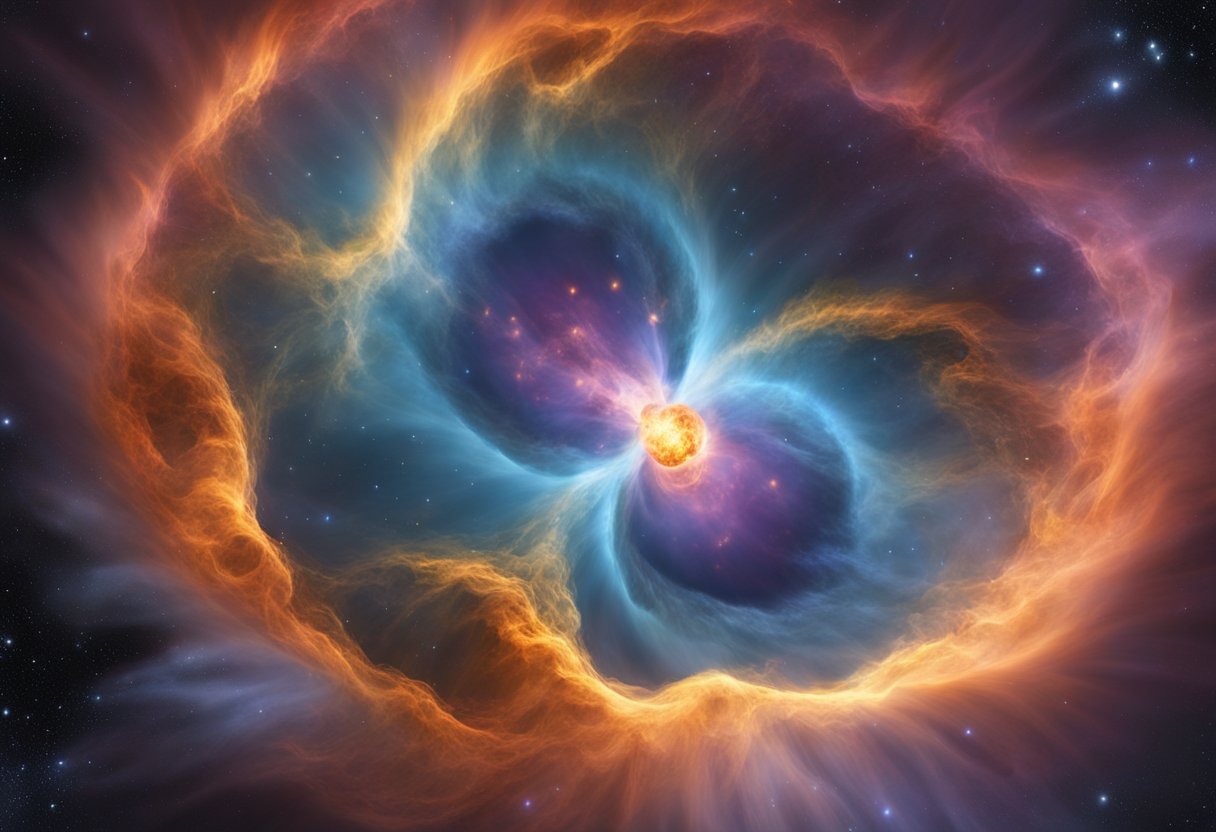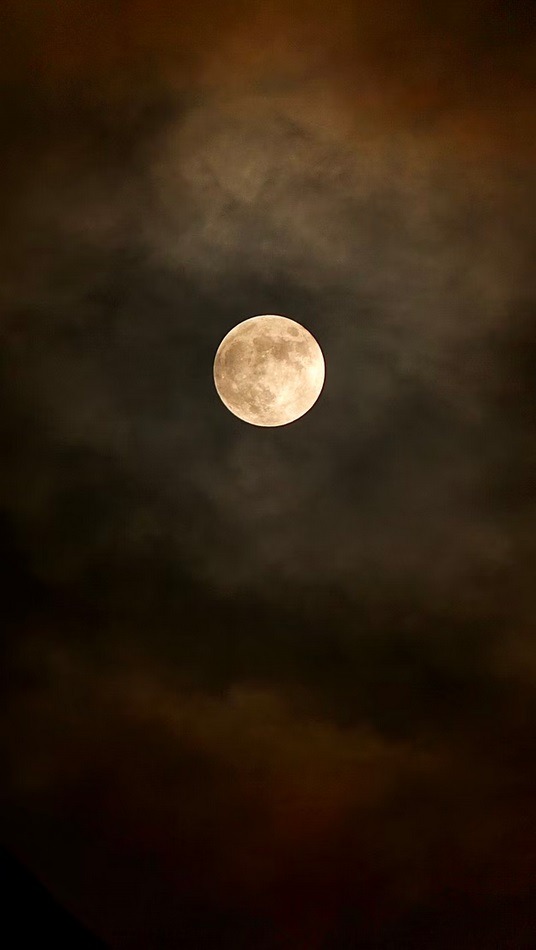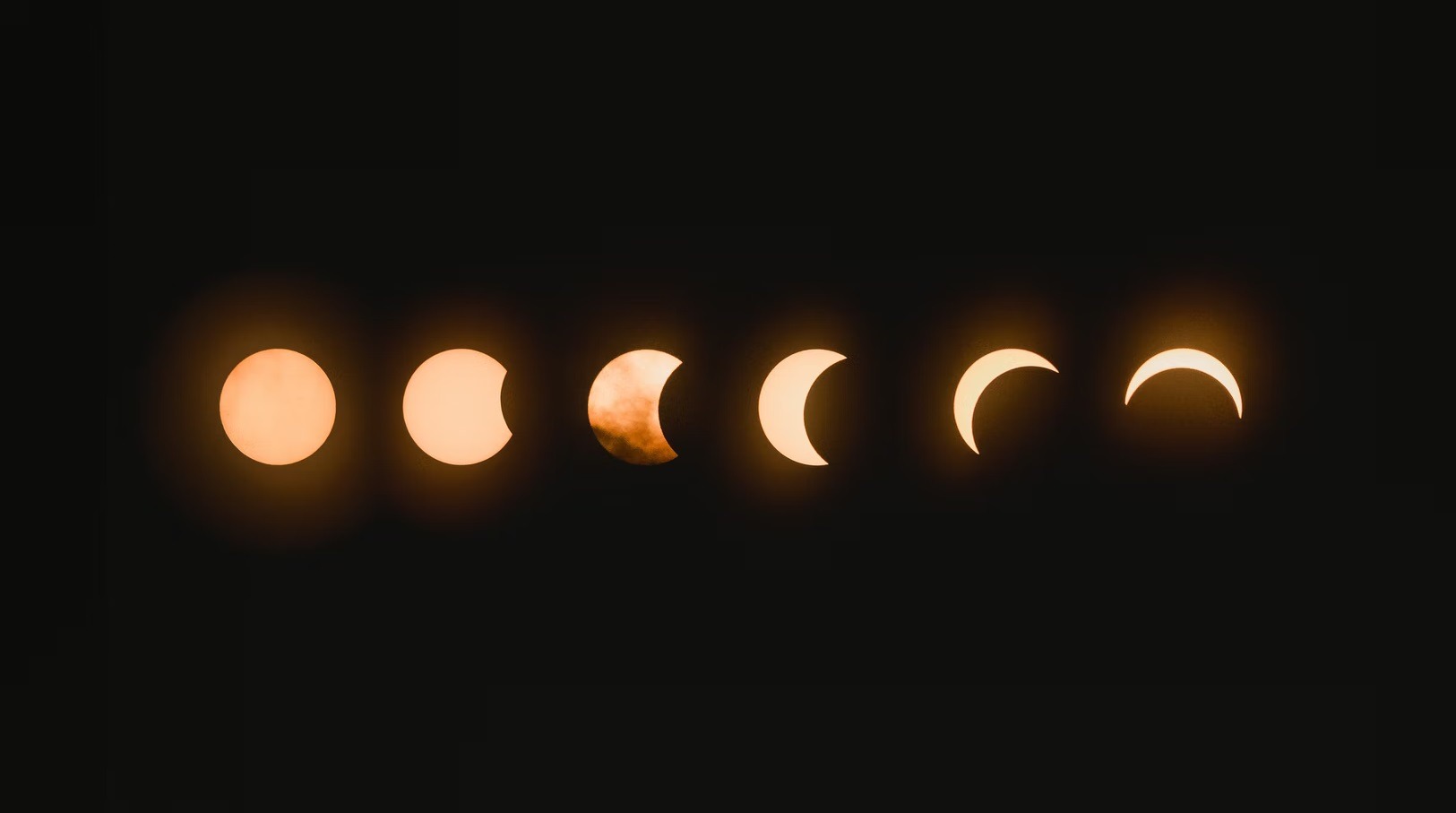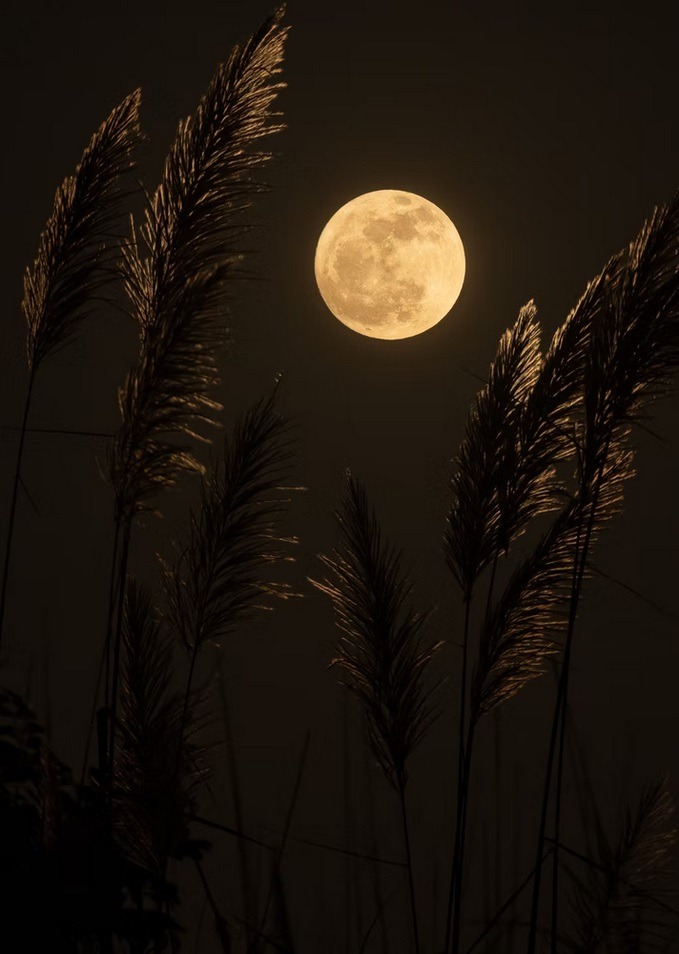Capture Theory of Moon Formation Explained
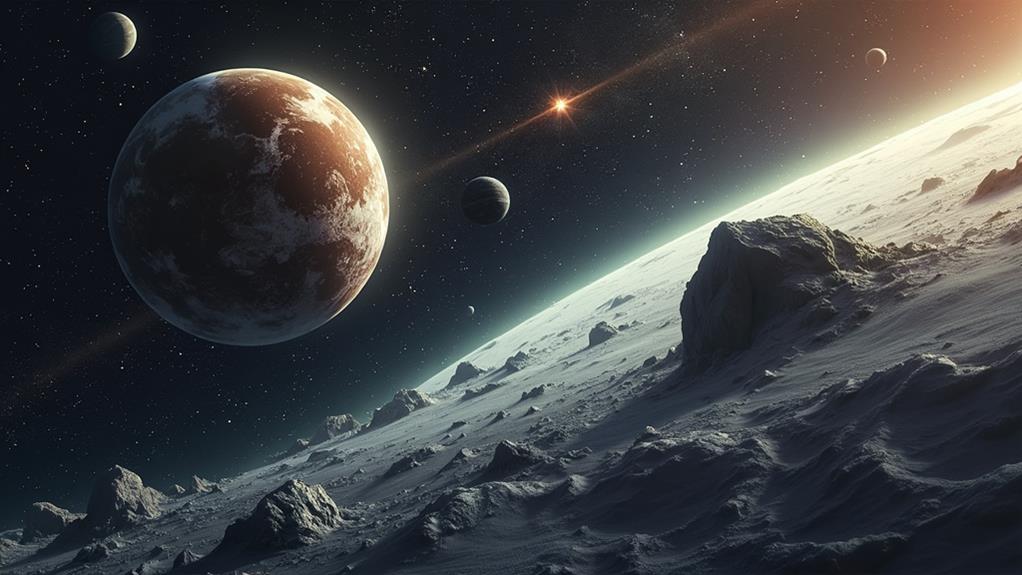
The capture theory suggests the Moon formed elsewhere in the solar system and was later captured by Earth's gravitational pull. This theory faces significant challenges; the Moon's nearly circular orbit, spherical shape, and similar isotopic composition to Earth don't match what you'd expect from a captured body. Complex gravitational dynamics make such a capture highly improbable. The more widely accepted giant impact theory better explains the Moon's formation. Understanding these differences will help you grasp why scientists favor certain theories over others and what future research might uncover next.
Key Takeaways
- Capture theory suggests the Moon formed elsewhere and was later captured by Earth's gravity.
- The theory faces challenges due to the Moon's nearly circular orbit and spherical shape.
- Similar isotopic compositions of Earth and Moon materials contradict the capture theory.
- Achieving a stable orbit through capture requires complex and improbable conditions.
- Lunar samples from Apollo missions show heating and composition inconsistent with the capture theory.
Overview of Moon Formation Theories
In regard to understanding the Moon's origin, several theories have been proposed, each offering unique explanations. These primary theories of moon formation include the capture theory, fission theory, condensation theory, and the giant impact theory. Each theory explores how the Moon might have come to be in its current orbit around Earth.
The capture theory suggests that the Moon formed elsewhere in the solar system and was later captured by Earth's gravity. While intriguing, this theory struggles to explain the Moon's nearly circular orbit and its similar composition to Earth's lunar rocks. The fission theory posits that a rapidly spinning early Earth ejected a portion of its mass, forming the Moon. However, the necessary rotational speed for this event seems improbable.
Condensation theory argues that the Earth and Moon formed simultaneously from the same gas and dust nebula. Yet, the Moon's lower density contradicts this hypothesis. Currently, the giant impact theory stands as the most widely accepted. It proposes that around 4.5 billion years ago, a Mars-sized body named Theia collided with Earth, ejecting debris that eventually coalesced into the Moon. This theory explains the similarities in composition and the Moon's orbital dynamics effectively.
The Capture Theory Explained
Let's plunge into the Capture Theory, which proposes that the Moon didn't originally form near Earth but was instead snagged by our planet's gravity after forming elsewhere in the solar system. According to this theory of Moon formation, the Moon would show compositional differences from Earth because it would have originated from different materials. Typically, captured bodies, like Martian moons Phobos and Deimos, exhibit irregular shapes and non-aligned orbits due to the nature of such gravitational interactions.
However, the Moon's nearly spherical shape and its orbit, which aligns closely with Earth's ecliptic plane, don't fit these expectations. Captured bodies usually have irregular shapes and orbits that aren't aligned with the capturing planet's equatorial plane, making the Moon an odd candidate for this theory.
The gravitational dynamics required to capture a body the size of the Moon are incredibly complex and necessitate a highly specific set of improbable conditions. This complexity is one reason why the Capture Theory has lost favor among scientists. Instead, the Giant Impact Theory, which explains the isotopic similarities between Earth and the Moon, has become more widely accepted in explaining Moon formation.
Challenges to the Capture Theory
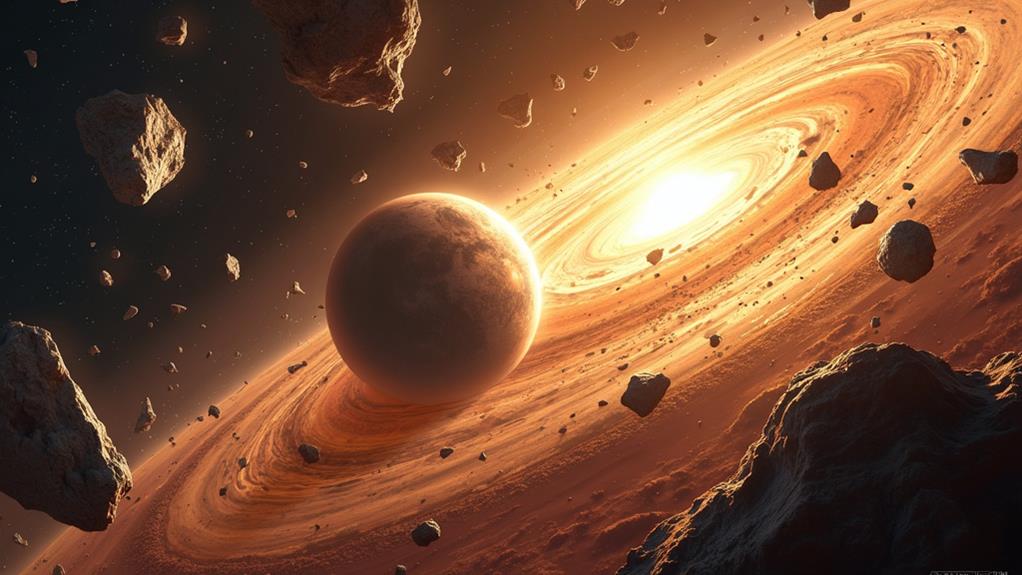
Questioning the Capture Theory reveals significant flaws that challenge its validity. For starters, the theory suggests that Earth's gravity captured the Moon, but this contradicts the Moon's nearly circular and stable orbit. Such an orbit would require highly improbable gravitational dynamics for a successful capture, which would otherwise result in chaotic orbits.
Furthermore, the similar isotopic compositions of Earth and the Moon point to a shared origin, disputing the idea that the Moon formed elsewhere in the solar system. If the Moon were captured, it would likely have a different isotopic makeup.
Another issue lies in the Moon's shape. Captured moons often have irregular shapes, yet our Moon is distinctly spherical. This suggests it didn't originate as a separate body. Moreover, the Moon's lower density and lack of a significant iron core pose further problems. If it had formed independently, you'd expect it to have a composition more typical of other celestial bodies, including a prominent iron core.
These inconsistencies make the capture theory less plausible and highlight the need for alternative explanations that align better with observed phenomena.
Evidence From Lunar Samples
When examining lunar samples returned by the Apollo missions, the evidence overwhelmingly disputes the capture theory. You'll notice that these samples exhibit a distinct lack of volatiles, indicating that the Moon underwent extensive heating. This is inconsistent with the capture theory, which suggests the Moon formed in a different location with a different thermal history.
The chemical compositions and isotopes of oxygen in lunar rocks closely resemble those of Earth's outer layers. Such similarities strongly support the giant impact theory, suggesting the Moon formed from material ejected during a colossal collision between Earth and another celestial body. If the capture theory were true, you'd expect to see more significant differences in these chemical and isotopic signatures.
Moreover, lunar samples contain a higher concentration of high-temperature minerals, further indicating the Moon formed near Earth rather than being captured from a colder region of the solar system. The presence of anorthosite and basalt in these samples points to a history of volcanic activity and cooling from a molten state. This aligns with the giant impact theory, which explains how Earth and Moon formed, rather than the capture theory, which wouldn't predict such geological features.
Comparing Moon Formation Theories
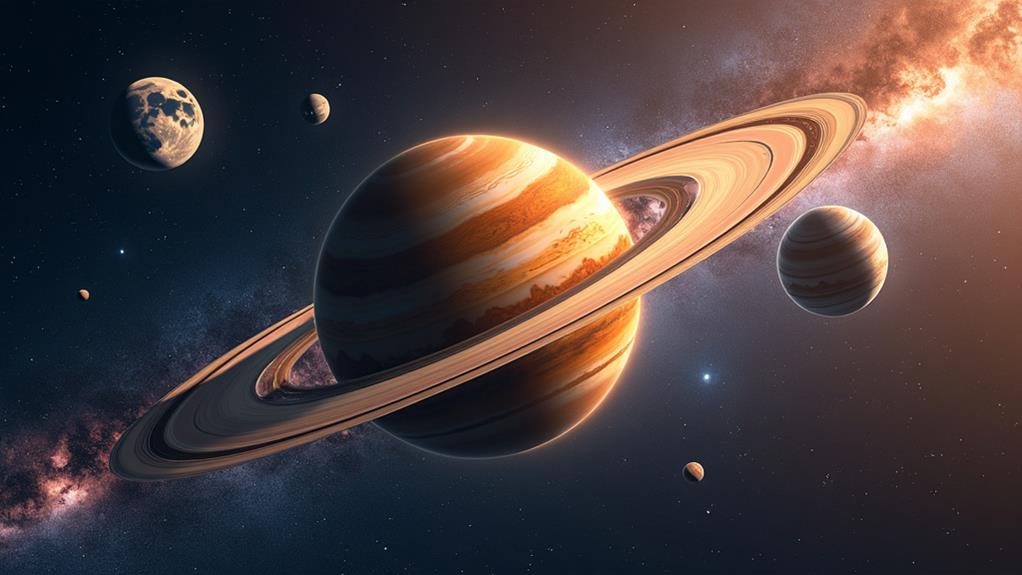
After examining the lunar samples that challenge the capture theory, it's essential to compare the numerous Moon formation theories to understand their merits and limitations. The Capture Theory suggests that the Moon formed elsewhere and was captured by Earth's gravity. However, this theory struggles with several key issues:
- The Moon's circular orbit and spherical shape are difficult to explain through capture.
- The isotopic compositions of Earth and Moon materials are strikingly similar, which the Capture Theory can't account for.
- The Moon's density (3.3 g/cc) contradicts the irregular shapes and varied compositions expected of captured bodies.
- Achieving a stable orbit through the capture process would require highly specific and improbable conditions.
In comparison, the Giant Impact Theory posits that the Moon formed from debris after a collision with a Mars-sized body, Theia. This theory better explains the isotopic similarities and the Moon's geological features. It suggests a shared origin, aligning with the density and composition observed in lunar samples. These factors have led to greater scientific acceptance of the Giant Impact Theory over the Capture Theory. By understanding these differences, you appreciate why the Capture Theory has declined in favor.
Future Research Directions
Advancements in technology and collaborative international efforts will drive future research on the capture theory of Moon formation. You'll see scientists utilizing advanced simulations to investigate how a passing celestial body could be captured by Earth's gravity. These simulations will help refine our understanding of the dynamics involved in such a process.
Isotopic differences between Earth and potential captured bodies are another area of focus. Researchers will analyze these differences to assess how well the capture theory explains the Moon's composition. By examining lunar samples and meteorites, they'll gain deeper insights into the Moon's early history and the plausibility of a capture scenario.
International missions and advanced telescopes will play an essential role in identifying and studying celestial bodies that might resemble the Moon's proposed origins. By examining other moons in the solar system, such as Mars' Phobos and Deimos, scientists can gather comparative data. This data could either support or challenge the capture theory.
Frequently Asked Questions
What Is the Best Explanation for the Formation of the Moon?
The best explanation for the formation of the Moon involves the giant impact hypothesis. In the early solar system, a Mars-sized body collided with Earth, causing a debris disk to form. This material eventually coalesced into the Moon. Isotopic similarities between Earth and the Moon support this. Other theories like co-formation, fission, and gravitational capture lack evidence. Tidal interactions and planetary collisions played key roles in lunar evolution.
Why Is the Capture Theory of the Moon Not Accepted?
You shouldn't accept the capture theory because it doesn't align with gravitational influences and celestial mechanics. Orbital dynamics and angular momentum don't support it. Planetary formation logic, historical context, and comparative analysis favor other theories. Isotopic evidence shows the Moon's composition is too similar to Earth's. Simulation models also fail to replicate a successful capture. Alternative hypotheses, like the Giant Impact Theory, better explain these observations.
What Are the 4 Theories About the Formation of the Moon?
There are four main theories about the Moon's formation. The Giant Impact Theory suggests a Mars-sized object hit Earth, creating the Moon from debris. The Fission Theory claims the Moon split from a spinning Earth. The Co-formation Hypothesis proposes the Earth-Moon system formed together from a dust cloud. Finally, the Capture Mechanism posits the Moon formed elsewhere and was captured by Earth's gravitational interaction. Each theory examines lunar composition, orbital dynamics, and historical models of planetary formation.
What Are the Main Difficulties With the Capture Theory?
You'll find the capture theory faces considerable challenges. Orbital dynamics and gravitational forces make it hard to explain the Moon's nearly circular orbit. Tidal interactions and impact velocity would disrupt such precision. Angular momentum and planetary collisions also play roles, but the lunar composition closely matches Earth's. Historical models and astrophysical evidence favor other theories. Celestial mechanics don't support the extensive heating needed to create the Moon's unique features.

